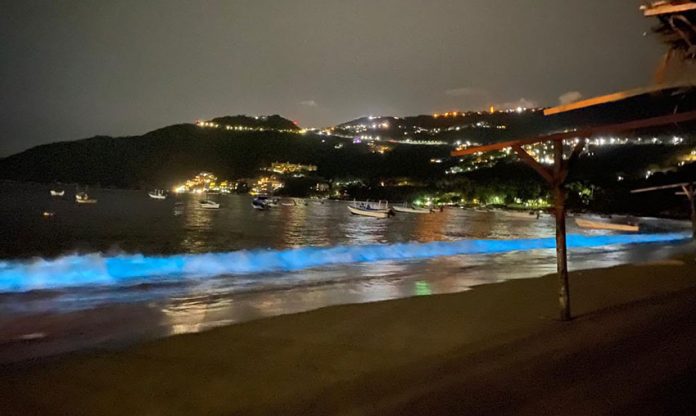The skies are clear over Beijing, dolphins have reclaimed the canals of Venice, and mountain goats roam the abandoned streets of North Wales.
It’s a truth self-evident and revealed to us throughout our history; our environment will eventually bite back and re-balance, undoing at least some of the damage of an often reckless entitlement. Once again, we’re starting to learn that our temporary absence offers universal respite — and Mexico is really no exception.
Since lockdown was imposed over a month ago, some extraordinary features of Mexico’s south have been revealing themselves once again. As we temporarily vacate our world, carbon levels drop, and wildlife is again allowed to flourish, gems that have been too often hidden are being seen and appreciated once again. Isla Holbox is one such case study.
Holbox is well renowned for its symbiosis with the environment. It famously welcomes eco-conscious travelers seeking to holiday in tandem with nature, and the island’s clientele over the last few decades has informed its ongoing ethos. But as positive an impact as it has had already, the drop in incoming visitors, as well as the continued wind-down of daily operations, has prompted recent sightings of giant manta rays and dolphins off the coast.
In addition to the unexpected sightings, hopes are high for the prospects of the Hawksbill turtles that come to nest on the beaches of Holbox every year. Farther inland, the island has a strong reputation as a sanctuary for birdlife, but now you’ll find more flamingos and herons than ever before.
It’s a similar story along the Riviera Maya and across the state of Quintana Roo. It’s no secret that the burgeoning tourism industry has all but desecrated the offshore habitats of vulnerable marine life. The tens of thousands of holiday-makers that descend on the beach leave it uninhabitable, and the behemothic cruise ships disturb the waters to such an extent that once ubiquitous sea creatures have long since abandoned them as their home.
Recently, however, as potential tourists remain locked down in their homes, the beaches and coastlines remain untouched for the first extended period in decades. As a result, pheasants, crocodiles, and even jaguars have been reported to be reclaiming large areas of Cancún. Perhaps the most unlikely scene was caught in front of a resort as a leatherback turtle was seen laying its eggs and nesting on the sea-front. But this resurgence isn’t confined to the coastline of the southeast, far from it.
Over on the coast of the southwest, Acapulco is experiencing scenes it hasn’t seen since before the area morphed into the world-famous tourist resort, decades ago. With increasing levels of organisms along the coast, bright flashes of blue, almost neon light, have been seen in the waves. Around 75% of deep-sea organisms emit this glow under the right conditions, but the consistent rotation of foot traffic in Acapulco over the years has disturbed the conditions in which this spectacle is allowed to thrive.
In lockdown, these organisms, finally being allowed to reclaim their natural habitats, have once again been providing one of the most mysterious natural phenomenons of the Mexican south.
This is all well and good, but the time will come when restrictions are lifted and “normal life” will once again resume. Of course, the population growth that species have been allowed as well as the reduced carbon emissions in the short term will still have happened, but won’t we quickly get back to reality, and the familiar plundering of our environment?
It is easy to envisage a situation in which the cabin-fever of quarantine galvanizes the masses to over-indulge in travel which may, within a few short months, reverse the positive effects of lockdown.
Alternatively, it is equally possible that those in lockdown who are spending extended periods with family and loved ones will have their priorities more permanently shifted. Many people may find that their experience of being with those they love over the period of lockdown has lessened their desire for traveling beyond the family unit. It is certainly a conceivable scenario and one that could lower emissions and ease congestion in tourist hotspots for the long haul.
Either way, we won’t truly understand the long-term fate of these newly revived eco-systems for a few more months, but we do have some early indicators. Many airlines are already beginning to list flights to the south of Mexico beginning as early as the first of June.
While we can only speculate at the demand for these trips this early on, it does show a clear and unfortunate corporate interest in making up for lost time. Whether this will translate into a universal desire to do so is still unclear, but in the meantime at least, the sea-life off the coast of Acapulco continues to illuminate the beaches at night.
Jack Gooderidge writes from Campeche.
